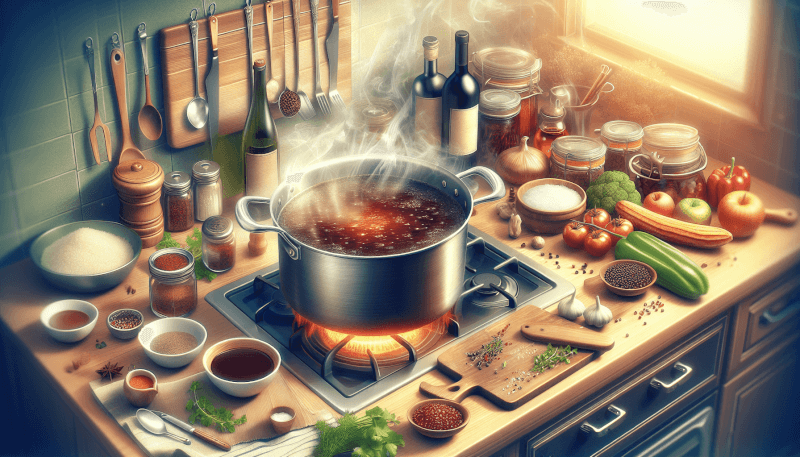You’re about to discover the secret to creating an exquisite reduction sauce that will elevate any dish to a whole new level of deliciousness. In this article, we will guide you step by step through the process of mastering the art of reduction sauce creation. From selecting the perfect ingredients to achieving the ideal balance of flavors, you’ll learn all the tips and tricks to develop a rich and flavorful sauce that will leave your taste buds begging for more. Get ready to impress your friends and family with your culinary expertise as we unveil the secrets to creating a reduction sauce that will take your cooking to the next level.
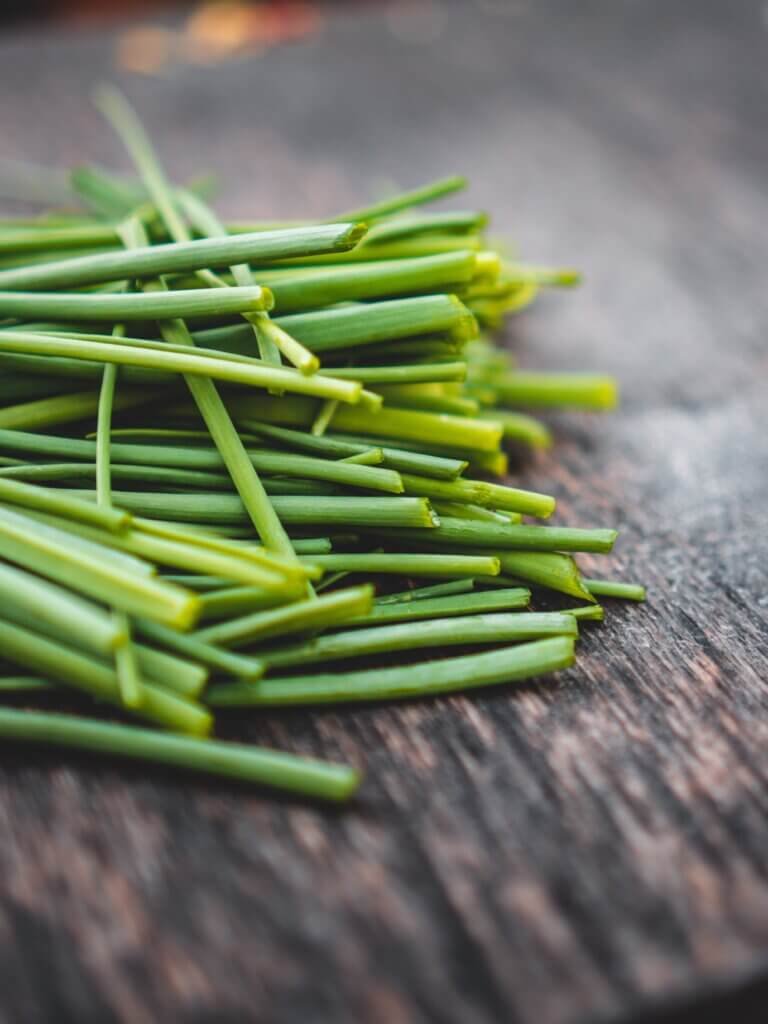
Introduction
In the culinary world, reduction sauces are a true game-changer when it comes to elevating the flavors of your dishes. Whether you want to add a touch of sophistication to your meal or impress your dinner guests, mastering the art of creating a rich and flavorful reduction sauce is essential. This comprehensive guide will walk you through the process of choosing the right ingredients, preparing the base ingredient, building layers of flavor, creating the reduction, enhancing the sauce’s texture, balancing the flavors, adding finishing touches, and even pairing your reduction sauces with various foods. So grab your apron and let’s get started!
Selecting the Base Ingredient
The key to a successful reduction sauce lies in choosing the right base ingredient. This ingredient will be the foundation of your sauce and will greatly impact its overall flavor profile. Options for base ingredients include meat, poultry, seafood, or vegetables. Consider the main protein or vegetable that you will be serving with the sauce and choose a base ingredient that complements it well. For meat-based dishes, opt for a tender cut like beef tenderloin or pork loin. With poultry, chicken breast or duck breast work wonders. For seafood lovers, salmon or shrimp can be excellent choices. And for vegetarians or those looking to experiment with plant-based options, mushrooms or roasted vegetables can be a delightful choice.
The Importance of Aromatics
Aromatics play a crucial role in enhancing the overall taste and aroma of your reduction sauce. These flavorful ingredients, such as onions, garlic, carrots, and celery, act as a flavor foundation by adding depth and complexity to the sauce. Begin by finely chopping or mincing your chosen aromatics, ensuring that they are evenly sized for even cooking. Sauté these aromatics in a pan with a small amount of oil or butter until they become soft and slightly caramelized. This will release their natural flavors and aromas, which will then blend harmoniously with the other ingredients in the sauce.
Choosing the Right Liquid
Selecting the right liquid component for your reduction sauce is crucial to achieving the desired consistency and flavor. The choice of liquid can vary depending on the base ingredient and the flavor profile you wish to achieve. Common options include wine, stock, broth, or even fruit juices. For meat-based sauces, red wine or beef stock can impart a rich and robust flavor. Poultry reduction sauces often benefit from white wine or chicken stock. Seafood pairs well with white wine or fish stock, while vegetable-based sauces can benefit from vegetable stock or even a splash of white wine. Consider the flavors that will harmonize well with your base ingredient and choose a liquid that complements it perfectly.
Trimming and Cleaning the Protein
Once you have selected your base ingredient, it is important to properly prepare it to ensure optimal flavor and texture in your reduction sauce. For meat or poultry, trim any excess fat or gristle from the protein. This will not only improve the appearance of the final dish but also prevent the sauce from becoming overly greasy. For seafood, ensure that it is fresh and properly cleaned, removing any scales, bones, or shells. When working with vegetables, remove any unwanted parts such as stems, seeds, or tough outer layers. Proper preparation of the base ingredient is essential to achieve a reduction sauce that is both visually appealing and delicious.
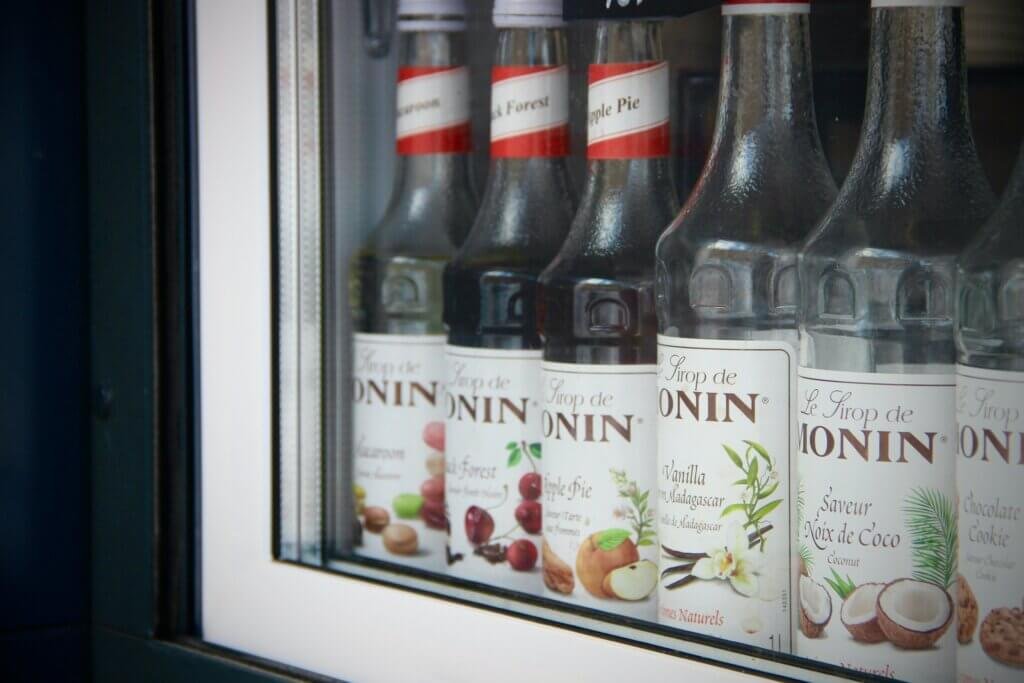
Seasoning the Base Ingredient
To infuse your reduction sauce with flavor from within, it is essential to season the base ingredient before cooking. Seasoning ensures that the protein or vegetables are flavorful on their own and provides a solid foundation for building layers of flavor in the sauce. Generously sprinkle the base ingredient with salt and pepper, ensuring that all sides are evenly coated. You can also experiment with additional herbs and spices that complement your chosen flavors. For example, a dash of paprika or cayenne pepper can add a subtle kick to a meat-based reduction sauce, while fresh herbs like thyme or rosemary can enhance the flavors of a vegetable-based sauce.
Searing or Roasting for Flavor
To further enhance the taste and texture of your reduction sauce, consider searing or roasting the base ingredient before proceeding with the sauce-making process. Searing refers to quickly cooking the protein or vegetables over high heat in a skillet or pan until the exterior develops a browned, caramelized crust. This technique enhances the flavors and creates a rich, savory taste in the reduction sauce. Roasting, on the other hand, involves cooking the base ingredient in the oven at a high temperature until it becomes tender and slightly browned. Both methods add depth and complexity to the flavor profile of the base ingredient, resulting in a more flavorful reduction sauce.
Using Aromatics and Vegetables
Once your base ingredient is prepared and seasoned to perfection, it’s time to build layers of flavor in your reduction sauce. Aromatics and vegetables make a significant impact in this process, adding depth and complexity. Begin by heating a small amount of oil or butter in a pan and sautéing your chosen aromatics, such as onions, garlic, carrots, and celery. Let them cook until they soften and their flavors become more pronounced. Then, add the vegetables that will further enhance the sauce, such as mushrooms, bell peppers, or tomatoes. These will contribute their unique flavors and textures, making your reduction sauce truly exceptional.
Incorporating Herbs and Spices
Adding herbs and spices is another essential step in building layers of flavor in your reduction sauce. The choice of herbs and spices depends on the overall flavor profile you wish to achieve. Experiment with different combinations, keeping in mind that certain herbs and spices pair well with specific types of reduction sauces. For example, thyme and rosemary work wonderfully with meat-based sauces, while basil and oregano can bring out the flavors of vegetable-based sauces. Spices like cumin or coriander can add a touch of warmth to your reduction sauce, while cinnamon or nutmeg can create a unique and aromatic twist.
Adding Depth with Alcohol
Alcohol can be a game-changer when it comes to adding depth and complexity to your reduction sauce. The choice of alcohol depends on your personal preference and the flavors you want to highlight. Red and white wines are commonly used in reduction sauces, with red wines offering a rich and robust flavor and white wines lending a lighter and fresher note. For a touch of sweetness, you can use fortified wines like port or Madeira. Brandy or cognac can bring a subtle richness to the sauce, while beer can add a unique twist. Remember to add the alcohol early in the reduction process, allowing it to cook off and meld with the other ingredients.

Deglazing the Pan
As you cook your base ingredient and aromatics, flavorful browned bits may accumulate on the bottom of the pan. These bits, known as fond, are a treasure trove of flavor and can enhance your reduction sauce significantly. To capture these delicious flavors, deglaze the pan by adding a liquid component such as wine, stock, or broth. As the liquid is added, use a spatula or wooden spoon to scrape up the browned bits, incorporating them into the sauce. This process will infuse your reduction sauce with a depth of flavor that will make it truly exceptional.
Adding the Liquid Component
With the base ingredient, aromatics, and vegetables prepared and cooked, it’s time to add the liquid component to your reduction sauce. Pour in the liquid of your choice, whether it be wine, stock, or broth, to provide the necessary moisture and flavor. The amount of liquid you add depends on the desired consistency and intensity of the sauce. Start with a smaller amount, as you can always add more later during the reduction process. The liquid will help dissolve and extract the flavors from the base ingredient and other ingredients, creating a harmonious blend of taste that will elevate your dish to new heights.
Simmering and Reducing the Sauce
To transform your reduction sauce into a rich, concentrated elixir of flavors, it is essential to simmer and reduce it. Once the liquid component is added, bring the sauce to a gentle simmer over medium heat. This will allow the flavors to meld together and the liquid to slowly evaporate, naturally thickening the sauce. As the sauce simmers, it will intensify in flavor, developing a luscious consistency. Stir occasionally to prevent sticking or burning, and continue simmering until the sauce has reduced to your desired thickness. Remember that a reduction sauce should coat the back of a spoon, showcasing its luxurious texture and concentrated taste.
Straining the Sauce
For a smooth and velvety texture, it is often recommended to strain the reduction sauce before serving. Straining removes any unwanted solids or impurities, resulting in a sauce that is visually appealing and satisfying to the palate. Place a fine-mesh strainer or sieve over a clean saucepan or bowl and carefully pour the reduction sauce through it. Gently press any remaining liquid out of the solids, ensuring that you extract the maximum amount of flavor and texture. This step will give your reduction sauce a refined and elegant finish, making it worthy of being the highlight of your dish.
Thickening with Roux or Cornstarch
If you desire a slightly thicker consistency for your reduction sauce, there are two common methods to achieve it: using a roux or cornstarch. A roux is a mixture of equal parts flour and fat, such as butter, that is cooked to a golden-brown color. Adding a small amount of roux to your sauce can thicken it while also adding a subtle richness. Cornstarch, on the other hand, is a gluten-free alternative that can be mixed with a small amount of cold liquid before being added to the reduction sauce. Whisk the mixture into the hot sauce, and it will thicken quickly as it cooks. Use these thickening agents sparingly, as a reduction sauce is meant to have a luxurious, slightly fluid consistency.
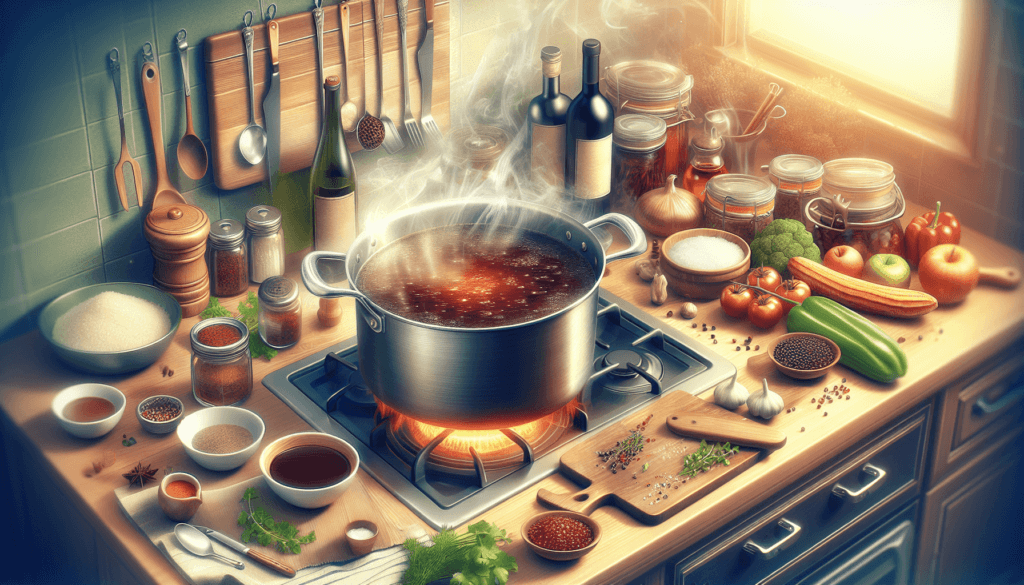
Balancing the Consistency
Achieving the perfect consistency is essential in creating a reduction sauce that adheres flawlessly to your dish. Once you have strained and potentially thickened the sauce, take a moment to assess its texture. If the sauce is too thick, you can gradually add small amounts of liquid, such as stock or broth, until it reaches the desired consistency. Conversely, if the sauce appears too thin, continue simmering it over low heat to further reduce and thicken it naturally. Remember that adjusting the consistency is a delicate process and should be done gradually, ensuring that the flavors and overall integrity of the reduction sauce remain intact.
Adjusting the Saltiness
Balance is key when it comes to the flavors of a reduction sauce, and salt plays a crucial role in achieving that balance. Once your reduction sauce has reached the desired consistency, taste it and assess if it needs any additional salt. If the sauce is lacking in saltiness, season it gradually, tasting after each addition until you reach the perfect balance. Keep in mind that some base ingredients, such as cured meats or salty cheeses, may already contain a significant amount of salt. In such cases, be mindful of the saltiness of the reduction sauce and adjust accordingly. Remember, it’s always easier to add more salt than to take it away, so start with small amounts and build from there.
Adding a Touch of Sweetness
To elevate the flavors of your reduction sauce and add a touch of complexity, consider incorporating a subtle sweetness. This can be achieved by adding a small amount of sweetener, such as honey, maple syrup, or brown sugar. The sweetness will counterbalance any acidity or bitterness in the sauce, creating a well-rounded and harmonious taste. Add the sweetener gradually, tasting as you go, until you achieve the desired level of sweetness. Be cautious not to overpower the flavors with sweetness – the goal is to enhance, not to dominate.
Incorporating Acidic Elements
Acidic elements can bring brightness and balance to your reduction sauce, cutting through richness and adding depth of flavor. Consider incorporating ingredients like citrus juices, vinegar, or wine that have a tangy or acidic profile. Lemon or lime juice can provide a refreshing burst of acidity, while balsamic or red wine vinegar can add depth and complexity. Remember to add these acidic elements sparingly, tasting as you go, as they can easily overpower the other flavors in the sauce. The goal is to achieve a subtle acidity that complements the overall taste and enhances the flavors of the reduction sauce.
Incorporating Butter or Cream
For a luxurious and velvety finish, consider incorporating butter or cream into your reduction sauce. These ingredients add richness and silkiness to the sauce, creating a luscious texture that will impress even the most discerning palates. Once your reduction sauce is complete, whisk in small pieces of chilled butter, one at a time, until fully melted and incorporated. This will create a glossy sheen and a velvety mouthfeel. Alternatively, a splash of heavy cream or crème fraîche can be added to achieve a similar effect. Be mindful of the balance between richness and heaviness, as the goal is to create a sauce that enhances the dish without overwhelming it.
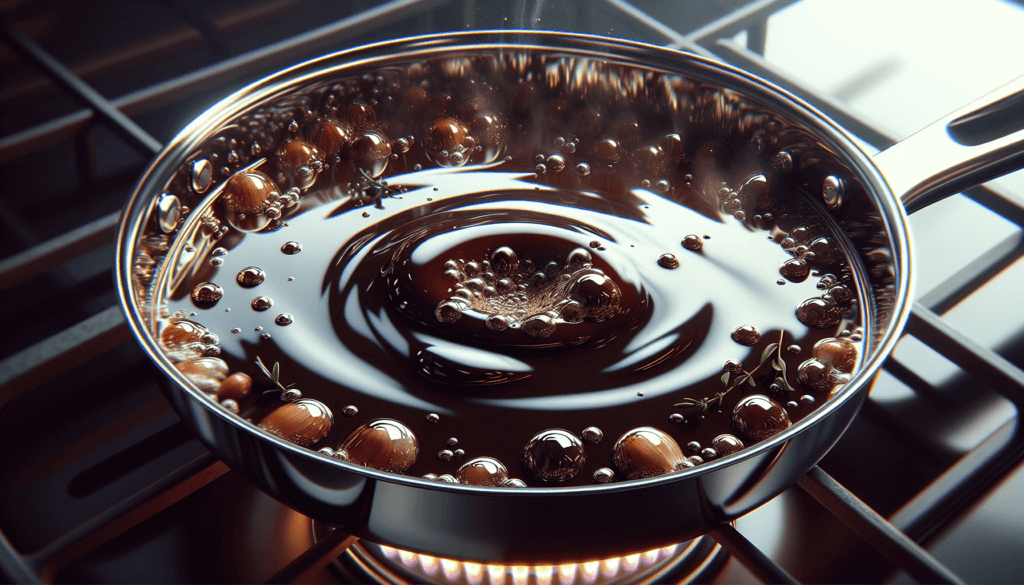
Adding Fresh Herbs
As a final touch, consider adding a pop of freshness and vibrant flavor to your reduction sauce with the incorporation of fresh herbs. Chopped herbs like parsley, cilantro, basil, or chives can be sprinkled over the sauce just before serving, adding a burst of color and aroma. Not only do fresh herbs enhance the presentation of the dish, but they also contribute their own unique flavors, elevating the overall taste of the reduction sauce. Experiment with different herb combinations to find those that harmonize well with your base ingredient and complement the other flavors in the sauce.
Experimenting with Flavors
Creating a reduction sauce is an opportunity to unleash your creativity and explore a wide range of flavors. While this guide provides a solid foundation, don’t be afraid to experiment and personalize your sauce to suit your own taste preferences and the specific dish you are preparing. Feel free to incorporate additional ingredients that you find appealing, such as roasted garlic, sun-dried tomatoes, or even a touch of truffle oil. The key is to balance the flavors, allowing each ingredient to shine while remaining harmonious as a whole. Embrace the art of sauce-making and have fun in your culinary adventures.
Proper Storage Methods
If you find yourself with leftover reduction sauce, knowing how to store it properly is crucial to maintain its quality and flavor. To store the sauce, transfer it to an airtight container, ensuring that it is completely cooled before sealing. Label the container with the date and contents to keep track of its freshness. Reduction sauces can typically be stored in the refrigerator for up to 5 days. If you plan to store the sauce for a longer period, consider freezing it in a freezer-safe container or zip-top bag for up to 3 months. Thaw frozen sauce in the refrigerator overnight before reheating.
Reheating Techniques
When it comes time to enjoy your stored reduction sauce, reheating it properly is essential to maintain its taste and texture. The best method for reheating is to do so slowly and gently over low heat. Place the desired amount of sauce in a small saucepan and heat it gradually, stirring frequently to distribute heat evenly. Avoid overheating or rapid boiling, as this can cause the sauce to break or separate. If your sauce needs a bit of refreshing, you can add a touch of liquid, such as stock or broth, to restore its consistency. Remember to taste the sauce as you reheat it and adjust the flavors if necessary.
Maintaining Flavor and Texture
To ensure that your reduction sauce maintains its optimal flavor and texture, it is important to follow a few key tips. First, refrain from reheating the sauce multiple times, as each time it is heated, the flavors can become more diluted. Instead, try to reheat only the amount you need for each serving. Additionally, avoid overheating the sauce, as excessive heat can cause the reduction sauce to split or become overly thick. It is also important to note that some reduction sauces naturally thicken when refrigerated, so gently reheating with a small addition of liquid can restore the desired consistency. Lastly, always give the sauce a good stir before serving to recombine any separated ingredients.
Choosing the Right Protein
Choosing the right protein to pair with your reduction sauce is an important consideration for a perfectly balanced and harmonious dish. When selecting proteins, think about the flavors and textures that will complement the sauce. For example, a rich and robust reduction sauce pairs well with beef or lamb, enhancing their natural flavors. Poultry, such as chicken or duck, can also be an excellent option, as it provides a lighter canvas for the reduction sauce to shine. Seafood, like salmon or scallops, can benefit from a delicate reduction sauce that complements their natural sweetness. Remember to choose a protein that can hold its own against the bold flavors of the reduction sauce, creating a balanced and satisfying meal.
Matching Flavors and Intensities
When pairing a reduction sauce with food, it is crucial to consider the flavors and intensities of both the sauce and the accompanying dish. Harmonizing these flavors will ensure a truly memorable culinary experience. Start by considering the dominant flavors of the reduction sauce – is it rich and savory, tangy and acidic, or sweet and aromatic? Match these flavors to the main components of the dish. For example, a rosemary-infused reduction sauce would pair wonderfully with roasted lamb, while a citrusy reduction sauce could complement grilled fish or chicken. Don’t forget about the side dishes – ensure they harmonize with the reduction sauce, either by mirroring or contrasting the flavors for a truly balanced and cohesive meal.
Complementary Side Dishes
Pairing the right side dishes with your reduction sauce can elevate the overall dining experience and create a complete, well-rounded meal. Consider the flavors, textures, and colors of both the reduction sauce and the main protein when choosing side dishes. If the reduction sauce has a rich and savory profile, opt for lighter and refreshing sides that provide contrast, such as a crisp salad or steamed vegetables. For a reduction sauce with tangy or acidic flavors, consider sides that balance the acidity, like creamy mashed potatoes or roasted root vegetables. The key is to select side dishes that enhance the flavors of both the reduction sauce and the main protein, creating a cohesive and memorable dining experience.
Using Too Much Salt
One common mistake to avoid when creating a reduction sauce is using too much salt. While salt is crucial for enhancing flavors, it should be used judiciously and in moderation. Remember that reduction sauces naturally concentrate flavors, including saltiness, as they cook down and reduce. Always taste the sauce before adding salt, as the reduction process may have intensified the overall saltiness. Start with a smaller amount and gradually add more if needed. It is easier to adjust and enhance saltiness later than to reduce it once it becomes overpowering. By exercising caution with salt, you can ensure that the flavors of your reduction sauce shine through without overwhelming the dish.
Overcooking the Reduction
Overcooking the reduction sauce is another common mistake that can lead to undesirable results. The reduction process should be done gently over low to medium heat, allowing the sauce to thicken and the flavors to meld together gradually. Avoid high heat or boiling, as this can cause the reduction sauce to break or become overly thick. Keep a close eye on the sauce as it simmers and periodically check its consistency. The goal is to achieve a reduction sauce that coats the back of a spoon, with a luxurious texture and concentrated taste. By taking care not to overcook the reduction, you will be rewarded with a reduction sauce that is velvety, flavorful, and perfect for your dish.
Neglecting to Taste and Adjust
One common pitfall when creating a reduction sauce is neglecting to taste and adjust the flavors as the sauce develops. Throughout the preparation process, it is vital to taste the reduction sauce regularly and make necessary adjustments to achieve the desired balance of flavors. Seasoning may need to be adjusted, additional herbs or spices may be required, or a touch of sweetness or acidity might be needed to perfect the sauce. Remember that your taste buds are your most valuable tool – trust your palate and make adjustments accordingly. Taking the time to taste and adjust the reduction sauce will ensure that it meets your personal preferences and enhances your culinary masterpiece.
In conclusion, creating a rich and flavorful reduction sauce is an art that can elevate any dish to new culinary heights. By carefully selecting the base ingredient, preparing it with attention to detail, building layers of flavor, and balancing the tastes, you can create a reduction sauce that will impress both yourself and your loved ones. Remember to experiment, be creative, and have fun in the process. With these tips and techniques in mind, you are well on your way to mastering the art of reduction sauces. So go ahead, don your chef’s hat, and let your taste buds guide you to sauce perfection!

